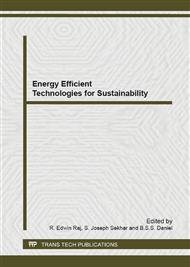p.151
p.158
p.164
p.173
p.180
p.188
p.195
p.199
p.206
Experimental Study on the Spray Characteristics of Diesel and Biodiesel (Jatropha Oil) in a Spray Chamber
Abstract:
The increasing industrialization and motorization of the world has led to a steep rise for the demand of petroleum-based fuels. Petroleum based fuels are obtained from limited reserves highly concentrated in certain regions of the world i.e. those countries that lack these resources are facing energy crisis. Hence it is necessary to look for alternative fuels which can be produced from resources available locally within the country such as biodiesel, alcohol and vegetable oil. The biodiesel is technically competitive with conventional petroleum derived diesel fuel and requires no changes in the fuel distribution system. For this reason and its biodegradability, use of biodiesel is considered a good alternative of fossil fuels. Injection process of biodiesel influences the atomization and dispersion of fuel in the combustion chamber. In this research work the influence of biodiesel on injection process and their impact on the air-fuel mixture preparation are studied. Spray characteristics of biodiesel (Jatropha oil) and diesel under various injection pressures were studied experimentally. Spray penetration and spray angle were measured in a spray vessel using a high speed video camera. The study shows the biodiesel gives longer spray tip penetration and spray angle are smaller than those of diesel fuels. The parameters like break up time and break up velocity were for biodiesel and diesel at various injection pressures. It was found that breakup time for biodiesel increases and breakup velocity decreases. Breakup velocity of biodiesel is less than diesel, this is due to higher sound velocity, density, viscosity and bulk modulus of biodiesel. High viscosity fuel suppresses the instabilities required for fuel jet to breakup and thus delays atomization and reduces fuel losses during injection. With the increase in fuel injection pressure, the breakup time for biodiesel is more than diesel, this is due its larger surface area of the spray and larger mixing time of biodiesel than diesel.
Info:
Periodical:
Pages:
180-187
Citation:
Online since:
September 2013
Keywords:
Price:
Сopyright:
© 2013 Trans Tech Publications Ltd. All Rights Reserved
Share:
Citation:


